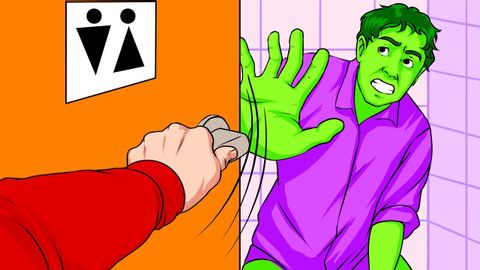
Subtitles & vocabulary
Why Bathroom Doors Open Inward And 15 Other Secrets
00
林宜悉 posted on 2020/03/06Save
Video vocabulary
material
US /məˈtɪriəl/
・
UK /məˈtɪəriəl/
- Noun (Countable/Uncountable)
- Cloth; fabric
- Supplies or data needed to do a certain thing
- Adjective
- Relevant; (of evidence) important or significant
- Belonging to the world of physical things
A2
More bacteria
US /bækˈtɪriə/
・
UK /bæk'tɪərɪə/
- Noun (plural)
- The very small creatures that can cause disease
B2
More reflect
US /rɪˈflɛkt/
・
UK /rɪ'flekt/
- Verb (Transitive/Intransitive)
- To indicate or be a sign of something
- To bounce back light, heat, sound from a surface
A2TOEIC
More Use Energy
Unlock All Vocabulary
Unlock pronunciation, explanations, and filters
